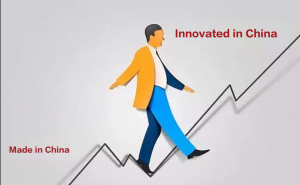www.pengnuochemical.com
Shijiazhuang PengNuo Technology Co., Ltd
Recently, the SAIC Volkswagen Nanjing plant, which had been in operation for 17 years, officially shut down, leaving over 3,000 employees facing transfers or layoffs. This marks the second large-scale factory closure by SAIC Volkswagen within two years, following the shutdown of its Shanghai Anting Plant No. 1 in 2024. This wave of closures is not limited to the automotive industry—multinational corporations such as HP, Microsoft, and Mitsubishi have successively scaled back their operations in China in recent years, forming a cross-sector withdrawal trend.
Behind this phenomenon lies a quiet transformation in China’s manufacturing industry:
Coexistence of Low-End Capacity Relocation and High-End Industry Clustering
Labor-intensive industries (such as textiles and electronic assembly) are relocating to Southeast Asia (where hourly wages in Vietnam are half those in China) due to rising costs, while foreign investment continues to flow into high-tech sectors like semiconductors, new energy, and biopharmaceuticals.
Role Shift: From “World Factory” to “Innovation Hub”
Multinational corporations are shifting their strategies from “manufacturing in China” to “innovating for China.”
Conclusion: Upgrade Opportunities Amid Transition Pains
The current movement of foreign capital is essentially the result of the interplay between the restructuring of global industrial分工 and China’s pursuit of high-quality economic development. As experts point out, “Most withdrawing companies are concentrated in areas where they have lost competitive advantages, while high-end projects continue to see increased investment.” China is transitioning from a “low-cost haven” to an “innovation hub,” with its core challenge lying in how to transform transitional pains into sustainable competitiveness through institutional innovation and technological breakthroughs.
We must keep pace with the trends of the times, focusing on product innovation and upgrades, optimizing product quality, and enhancing competitive strength.
Our products include:
3-Amino-5-mercapto-1,2,4-triazole CAS: 16691-43-3
2-Hydroxy-2-methylpropiophenone CAS: 7473-98-5
2-[Tris(hydroxymethyl)methylamino]-1-ethanesulfonic acid CAS: 7365-44-8
Post time: Jul-04-2025


